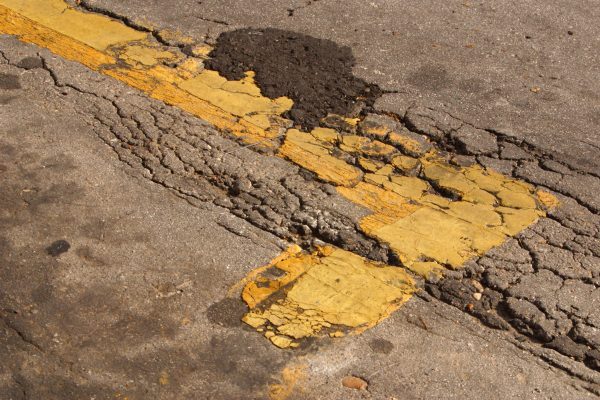When it comes to different asphalt services, each job requires its own process. For example, pavement restoration is a bit different than pavement installation. At the same time, getting your pavement installed properly can make pavement restoration jobs much less involved, since you won’t be having to correct a poorly-done job that has caused further issues or avoidable degradation and damage.
If you’re thinking of contracting a pavement company like AA Asphalting Seattle for your asphalt services, you might be wondering, “what is the process for asphalt installation?” After all, you’ll need to know what to expect when planning for asphalt installation and pavement restoration, as well as what questions to ask your contractor during the process. Keep reading to learn about each of the seven steps of the asphalt pavement installation process.

Step 1: Asphalt Removal
So, how do you restore asphalt? Before new pavement can be installed, the old asphalt or concrete needs to be removed. During the first phase of asphalt pavement installation, machinery will be used to break down and haul away the old pavement material. Many asphalt services wind up recycling this material to be used in future projects by breaking it down further.
Step 2: Grading
After the old asphalt has been removed, the next step in the pavement restoration process involves ensuring that the asphalt will drain properly. Through sloping and grading—guided by laser-based technologies—a company such as AA Asphalting Seattle will make sure that water will run off of your pavement properly. Water is one of the main causes of erosion and cracks in asphalt, so it’s paramount that sloping and grading are done properly, and by professionals.
Step 3: Sub Base Compaction
The next step in asphalt pavement installation actually has to do with properly preparing the sub base. The sub base is the foundation for your pavement, and is one of the most important asphalt services to get done correctly during pavement installation. Your sub base will be measured and compacted in order to form a strong barrier for cold weather temperatures and a stable surface for your pavement.
Step 4: Proof Rolling

While some asphalt services skip this step in pavement restoration and installation, proof rolling is actually an important way to test your sub base before moving forward with any next steps. During a proof roll, a heavy truck will drive over the surface one row at a time while holding a considerable amount of weight. This helps to determine whether or not your sub base is buckling in any areas. If it is, those portions of your pavement will need to be addressed and remedied before moving on.
Step 5: Binder Layer is Added
Once it’s determined that the sub base is properly installed, it’s time to add the binder layer. If you’ve been wondering what’s the best base for asphalt, it’s generally best practice to use a small aggregate for the binder layer. A small aggregate is a material with a diameter of at least ⅝”. Small aggregate may contain gravel, recycled concrete, or slag, and helps provide the strength your asphalt needs to function properly.
Step 6: Fresh Asphalt Laid
Finally, it’s time to add the asphalt layer to your pavement! Unlike the binder layer, the surface layer of your asphalt generally consists of finer aggregates like sand mixed with oil. This combination of materials gives asphalt its distinctive, black shine.
Step 7: Transitions + One More Roll
The last step of asphalt pavement installation involves making sure that transitional points where the new asphalt meets the old pavement are smooth and seamless. Sometimes butt joints are used to ensure these transitions provide adequate water run-off and keep your pavement strong. After transitional areas of your pavement have been appropriately dealt with, one last roll ensures that everything is smooth and shiny.
Now that you’ve seen how many steps are involved in pavement restoration and installation, you might be wondering, “how long does it take to resurface asphalt?” Depending on the size and complexity of the job, a company like AA Asphalting can tackle a pavement restoration job in as little as one day. Depending on scope and complexity these jobs can sometimes take a week or longer to perform. Reach out to a professional pavement contractor to see how long your asphalt services will take and get your installation scheduled.

